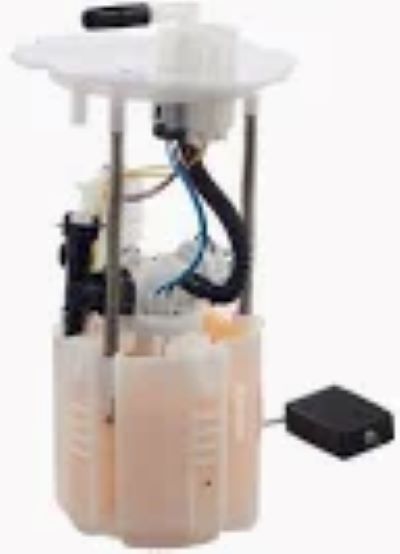In fact, replacing a fuel pump is among the more difficult jobs in terms of the location of the pump and also requiring some specialized tools and knowhow. Fuel pumps generally are located inside the gas tank or near it, so accessing them typically requires hoisting up the vehicle, disconnecting fuel lines and occasionally removing other parts. Most mechanics that are experienced in doing this type of job, can complete the work in about 3-4 hours; whereas, those who might classify themselves as DIY’ers will obviously take longer. A full gas tank—often several gallons and more than 100 pounds—also complicates matters; many repair manuals suggest extracting the fuel first to lower hang-up risks during installation and save some elbow grease.
Fuel pressure on most vehicles needs to be between 30-80psi, but keeping it within this range is critical! No one wants to pay twice and incorrect installation or damage during replacement can lead to a fuel leak, improper fuel pressure, or stalling. Poor or inconsistent pressure can cause the engine to run lean which will impact on both performance and fuel economy. Whereas having to purchase a new fuel pump when it fails can reduce gas mileage by as much as 15%, meaning much higher costs for gasoline and decreased engine life.
In order to carry out the replacement of a fuel filter, you are going to need some plastic gloves, handcleaner and a few tools like a torque wrench, jack under pressure and safety goggles as well. Removing a vehicle's high-pressure fuel pump has the potential to go wrong which could lead to damaged fuel lines or misplacement of gaskets -- both are very serious safety concerns. However, Mechanic Alex Trueman from Motorwise states “Elaborates that fuel pumps are among the most incorrectly-instrumented causing engine efficiency reduceds due to incorrect pressure alignment which largely reduces fuel economy and operational performance.” It's a reminder that, while fuel pump installation might look like a parts swap to the naked eye, it takes specialized expertise to do correctly and maintain reliable operation.

For a rough idea of what professional replacement costs would usually amount to, you can expect anywhere between $300-500, depending on the model and labors rates. While this might seem pricey, it is not only expensive due to the price range of the pumps, $50 to $200 depending on the pump alone but also because it comes with the skilled work done by certified technicians that get installed and tested for accurate operation. Poor installations can lead to a further expense of repair. This means, for example in a case where the fuel pump does not provide sufficient enough pressure slowing down which in this makes certain injectors to compensate and this could lead to the injection systems to under pressure, including the collabration between the car engines and cooling system maintenances. Then add in the additional repairs you have to make because they did such a poor installation and that's could easily be another $200-$400.
Although DIY replacements tend to be a cheaper alternative, even those with average mechanical ability can easily void vehicle warranties from incorrect installation or using incorrect parts. Moreover, the wrong fuel pump could lead to added engine troubles since most manufacturers construct pumps based on a vehicle's fuel pressure and flow needs. This often leads to higher long-term costs and operational problems, particularly for automobiles with more complicated fuel systems or digital gas injection setups that must offer correct fuel delivery.
IRSTream For anyone seeking additional info on selecting the right fuel pump, replacement details, head to Fuel Pump and find it has atremendous amountof information about fuel pump matching, how to best install a performance or any other type of pump and much more. For those drivers who are willing to figure it out for themselves, this resource will be useful in determining whether they really need a DIY solution or if professional installation makes more sense as the best method of getting maximum horsepower and engine efficiency.